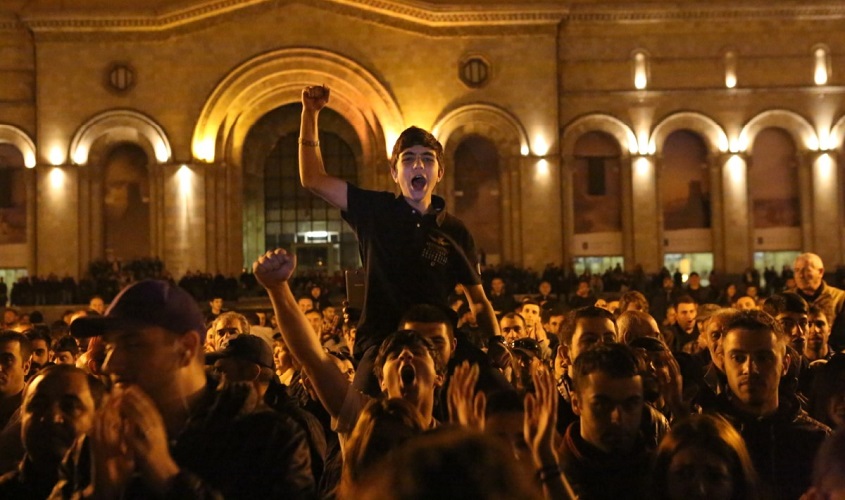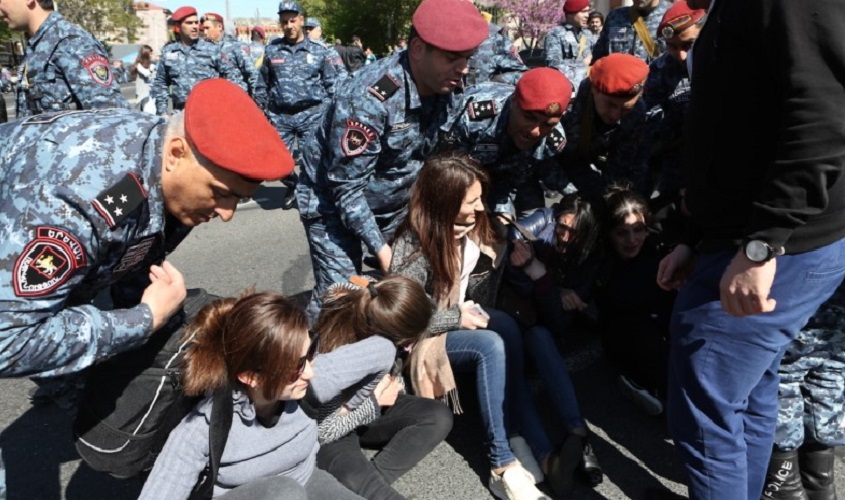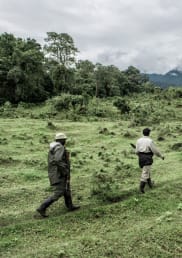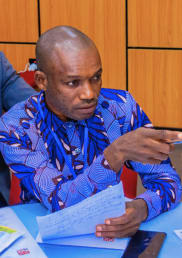Who are Armenia’s protesters, and what can we learn from them?
In the last two weeks, Armenia has been gripped by an uprising that has been dubbed a ‘velvet revolution’. Strictly speaking, this may be a misnomer, but the name has stuck because it conveys the movement’s core principle of non-violence.

While experts are having a heyday dissecting its politics, exploring future scenarios, and warning of potential pitfalls – all useful things – an equally fascinating question is who are those unexpected, stubborn and well-organised people in the streets?
Young people
The faces of the protests are refreshingly young. Even the leader of the movement, Nikol Pashinyan, a 42-year-old MP, has just become one of the youngest political leaders in the world. Students, teenagers, tech workers – often described as apathetic, cynical and lazy – only add to the surprise factor and ‘charm’ of the uprising. No one saw a revolution coming or could discern the romantics and idealists in them who would take on a stale yet resourceful state machine and not take no for an answer.
Youthful and fun they might be (all-night dancing and street-blocking BBQs might be favourites), but don’t confuse them with a music festival crowd. With extremely efficient organisation, tactical shrewdness and discipline, they’ve made their way into textbooks on non-violent movements. Their self-control to avoid confrontation, even when presented with police violence, methodical engagements with politicians, and respect for the constitution make them an unknown but formidable political force.
Any analysis of what drove them to the streets and kept them within their carefully devised strategies risks being simplistic. But understanding what ‘clicks’ with young people, what shapes their worldview and inspires them to act is key for channelling their positive energy and purposefulness into consolidating the movement’s gains.

Women
Another feature making the events a modern civil movement classic is women’s participation. Armenian analyst Mikayel Zolyan observed that he’d not seen an event so ‘gender balanced’: “There were almost as many women on the streets as men, and at certain points the women even outnumbered men (especially given that men were more likely to be detained or beaten up by the police).”
Indeed, the number of women who joined and led protests is astounding. Bearing in mind that Armenian society is traditional and that women’s primary social role is viewed through a wife-mother prism, taking a political stand and making demands takes a lot of courage and integrity. As millions of women around the world have recently been inspired into speaking up, the women protesters in Armenia also felt ‘time was up‘ and they put their own meaning into #metoo.
Unfortunately, many similar movements in other contexts have ended up reverting back to marginalising women and sexual and gender minorities as soon as ‘the revolution no longer needed them’. The next big thing for Armenian society will be to remain as inclusive and tolerant as it has demonstrated it can be within the last few weeks.
Civil society
“We wanted civil society but got NGOs,” an eastern European activist once aptly remarked.
Without diminishing the role of the NGO ‘sector’, which is a subject for another analysis, the events in Armenia have been instructive for reflecting on the wider meaning of civil society as, according to the Italian philosopher Antonio Gramsci, “a public sphere of contestation over ideas and norms, in which beliefs are shaped,” and, ultimately, an action taken.
As the space for NGOs shrinks globally and trust in the sector is shaken, we should remind ourselves that civil society includes an ever wider and more vibrant range of organised and unorganised groups.
During the tensest episodes of the protests, Pashinyan’s “follow my instructions on Facebook” was a good example of how the boundaries between sectors blur and those involved experiment with new organisational forms, both on and offline. The use of social media (Facebook, WhatsApp) was vital for disseminating real-time ‘uncensored’ information and for the protests to spread outside the capital Yerevan and become a truly national movement.
In a recent conversation, a few young people who have been part of International Alert’s work on the transformation of the Nagorny-Karabakh conflict, and are now part of the velvet revolution, told me they felt the term ‘civil society’ was too limiting and formal to represent them. But in a Gramscian sense of their capacity to think differently, challenge assumptions and norms, and articulate new ideas and visions, they are the civil society to which the future belongs. The rest of us just need to catch up with them.



